Many of its residents have sought employment in the gold fields, so Farm Village on the East Bank Essequibo has seen such improvements as modern homes and a higher standard of living.
Villagers who have migrated have also provided financial help for their relatives to make their lives comfortable.
The village has beautiful landscaping with trees planted along some sections, giving it a welcoming look.

Farm was previously known for many youth being idle and getting involved in drugs along with other social issues but residents are proud that the problem has eased up significantly and so has stealing.
Gold mining had always been a form of income for some residents but now it seems to be the main source, especially for the youth.
According to residents, the lack of job opportunities forced many of the residents to seek employment with gold miners in the interior.
Raymond Greene, 19, is one of the youth who started working in the interior at a young age.
He was 16 at the time. However, a few months ago he sought employment with a boat-builder and said he prefers that job because he is closer to home. He is also skilled in masonry.
Greene, a school-dropout, said being gainfully occupied has helped keep him away from negative activities.
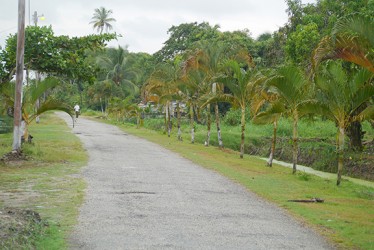
Some of the residents are engaged in cash crop farming, mostly in their yards, and in rearing poultry, pigs, cattle, sheep and goats.
They said proudly that the village has produced a doctor as well as teachers, police officers and other professionals with senior positions.
In addition, residents have established businesses, including grocery and convenience shops, a plant and spare parts shop and beauty salon.
The office of the Hydronie/Good Hope Neighbourhood Democratic Council (NDC) can also be found in the village along with the Guyana Water Inc pump station, church, a nursery school and multi-purpose centre.
During our mid-morning visit, students at the nursery school were playing in the compound, while the teachers were preparing others for their school sports.
Beach
The school is located close to the seawall, a section of which is covered with overgrown bushes. In the past, residents used to walk along that section to access a beautiful sandy beach, tucked away beyond the mangrove trees. It was a regular place for picnics or for
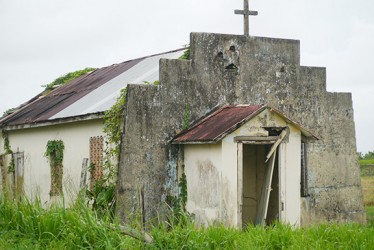
just a dip in the inviting water.
As we watched, a fisherman, Andrew, and a young boy came out of their fishing boat and walked to the shore to pick jamoons from on top of the seawall. The captain waited in the boat as the two returned to pull up the seine.
A sea-defence breach had occurred nearby a few years ago, resulting in flooding and residents losing their cash crops and livestock. To seal it, huge boulders were piled beyond the concrete wall and along the sand to prevent further erosion.
Residents want the thick vegetation to be cleared because of snakes which could pose a danger to the schoolchildren.
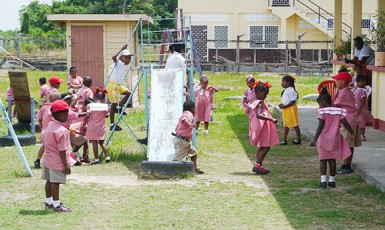
Regional councillor, Richard Waddle, in an interview said “sea-defence needs to do some work. The council had also requested for the work to be done… The bushes were cleared from some of the other areas but would grow back over time.”
The bridge leading to the seaside is also in a terrible state and Waddle said BK International had fixed it while undertaking the sea defence work. After it was completed, most of the materials from the bridge were removed, he added.
Regarding the multi-purpose centre, he said residents had looked forward for that since 1990 and were thankful that it was finally acquired about eight years ago.
However, he said the building was “supposed to be controlled by a management committee” but instead it is a one-man show, referring to a regional councillor. According to him, the building is now being referred to as a “cream [colour of building] elephant.”
He said too that they had asked for a six-burner gas stove but instead they got one with four burners and it was not adequate.
Baking classes that were being conducted for women at the facility have been discontinued. They were using a box oven outside to do the baking and when it rained they got wet.
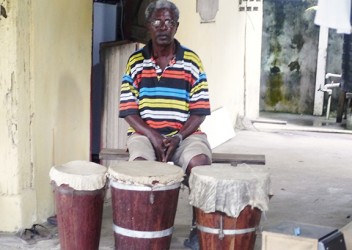
Residents are pleased that the drains are being well-kept and they are not being affected by flooding but Waddle feels the work was not done as well as it should have been.
Waddle, who also serves as vice-president of the Vergenoegen/Naamryck Water Users’ Association, told the World Beyond Georgetown that, “If they are going to do rehabilitation, then it should be done properly so that it would be able to last, especially if it is being done with machines.”
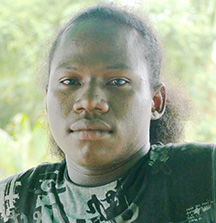
Waddle, also a livestock farmer and a skilled joiner by profession, said there are plans to start a cultural group to keep youth occupied. The idea is also to make a positive name for Farm. They had recently bought a mic system, while he has to fix up some drums he had already made and now has to make a guitar. He also plans to share his joinery skills with the youths.
Farming
Resident Mellis Hinds, who is 83 years old, is a pleasant woman who laughed when told that she looked and sounded a lot younger.
Her only child, a son who works in the gold fields, takes care of her. Hinds had 3 other pregnancies all of which ended in stillbirths.
Hinds spoke of having a close relationship with the Rahman and Mohamed families of Le Destin, a neighbouring village.
She said her son was sickly as a child and she was advised to ‘sell him’, which she did to the Mohamed family.
After that her son’s health improved and the friendship between the two families grew. With a smile, she recalled “as soon as you missed him [her son] he was there [at the Mohameds’]…”
The eldest of seven siblings, she was just a few months old when her parents moved from Wakenaam to live in Farm.
Her parents planted rice, cash crops and provision on a farm in the backdam and she helped them a lot even while attending school.
She had just finished school when her mother died. She began to sell the produce at Leonora then at the Parika market; her produce was transported by donkey cart.
She got so accustomed to farming that even after they stopped planting in the backlands she still kept a kitchen garden. Even though it was hard work she enjoyed it and said “those were nice day; things were cheap. I am surprised now when I hear the price for items.”
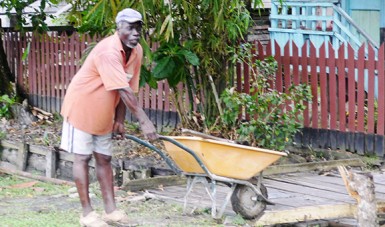
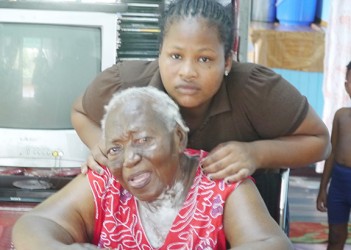
Her parents also reared cattle and she chuckled that she had gained weight after using a lot of the fresh cow’s milk and had to be put on a diet.
Farming is no longer a big economic activity in the village and according to her “young people don’t take on farming because they said that is for old people. They prefer to work for fast money.”
Next door, Doris ‘Enid’ Barrow, 72, once a popular shopkeeper, was relaxing in front of her home.
Her two sons reside with her and help with cooking while she does the laundry.
Originally from Meten-Meer-Zorg, she said she got married at age 21 after her husband was looking for “someone good” and a match was made.
He worked in Linden and she lived there with him for 10 years before relocating to the village.
In another section, Mohamed ‘Bayo’ Sherif was operating the Popeye’s Plant Shop which he established three years ago, selling all types of fruit, vegetable and flower plants.
He also runs a spare parts shop, fixing and selling used RZ and 3Y buses or stripping them and selling the parts.
Customers would come from Berbice and other parts of the country for spares they would not find anywhere else. His wife, Narefa also helps out with the business.
Next door, Haseena Basdeo was assisting her mother, Shakeela in her little convenience shop. She posed in front of the shop with her little daughter as a customer waited to be served.
Haseena’s husband, Sunil ‘Ravi’ Singh works as a minibus operator and also provides a wash bay service at their home nearby.
Rice field
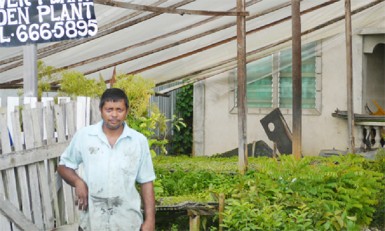
Alice Morris, 91, the oldest resident, recalled working very hard in the rice fields with the Rahmans – large-scale rice farmers – in her young days. The ploughing was done by bull and the planting and harvesting by hand.
“They soaked the paddy to make biya [young plants] and then we go in the water [in the fields] and stick the biya,” she said. “We start early in the morning and would finish late in the afternoon and sometimes the water would reach us up to our legs.”
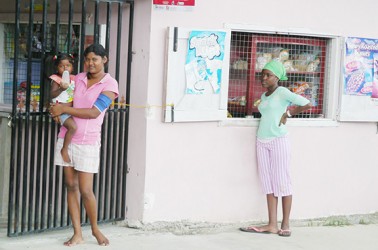
Morris said “at the time things were rough. But now everything is easy; these are modern days and they have tractors and combines now…”
She later got married to Oscar Morris who moved from his Plaisance home to live with her at Farm. She bore him seven children.
He worked at the Transport & Harbours Department and she reminisced that “every Friday when he got home from work we would go and buy ration.”
Morris lived for 15 years of her life in Canada and New York, where she worked as a nurse aide. For her, there’s no place like home where she can enjoy the fresh breeze all year round.
Jack of all trades
Esmond Phillips was busy fetching dirt into his yard in a wheelbarrow to fill up his kitchen garden. He is a driver by profession, but described himself as a “jack of all trades, master of none.” He also said that he drives “anything on wheels.”
He lived all his life in the village and was happy to see it develop and transform with “some people putting up their lil big houses when they catch dey lil fast money.”
As he puts it; the young men would “find work in the bush, get malaria, get their two dollar and come out back” and improve their standard of living.
He said residents were “trying with dey lil gardening, you know, you got to do something. Some people minding dey lil chickens and lil cows and thing.”
But there is a problem with finding grazing grounds for the cows and he and some others had to get rid of their cows for the same reason.
Other than that, he said, “things normal, we don’t have any big problem here. We’re trying to keep the kids in control through the church.
He said “there were a few persons in the village who want to catch their hands through selling drugs but we try to get rid of them. The police would raid them out and they would ease up. I would also personally rebuke the youths when I notice them using marijuana…”
He said residents were not farming in the backlands mostly because the land was not producing. Besides, the 60 persons who own small plots may use it for rice, cash crop or cattle farming and “those cannot go together.”
History
The village was established in 1887 after it was bought by ex-slaves who pooled their money. The surveying was completed two years later. There were 26 house lots and an equal number of backdam plots.
Farm was said to be the last village that was sold.
Some of the descendants of the slaves are the Camerons, Dicksons, Wilsons, Adamses, Trotzes, Phillipses and the Wardes.
Close to Waddle’s home stands an abandoned Scots church. He said the land belonged to the Presbyterian body. When they built the church, they put the day’s newspaper—at that time it was the Sunday Argosy—in a bottle and cast it in the cornerstone. Afterwards residents mistakenly thought that the transport for the land was in the bottle.
According to Waddle, the plan that is being used in the village is “not the true plan. Some people ask me if I’m a surveyor, I’m not a surveyor but land don’t move. That is causing a problem in the village because in one section, a quarter lot cannot be found.”
All in all though, residents are pleased with the positive changes that have been taking place in the village.





